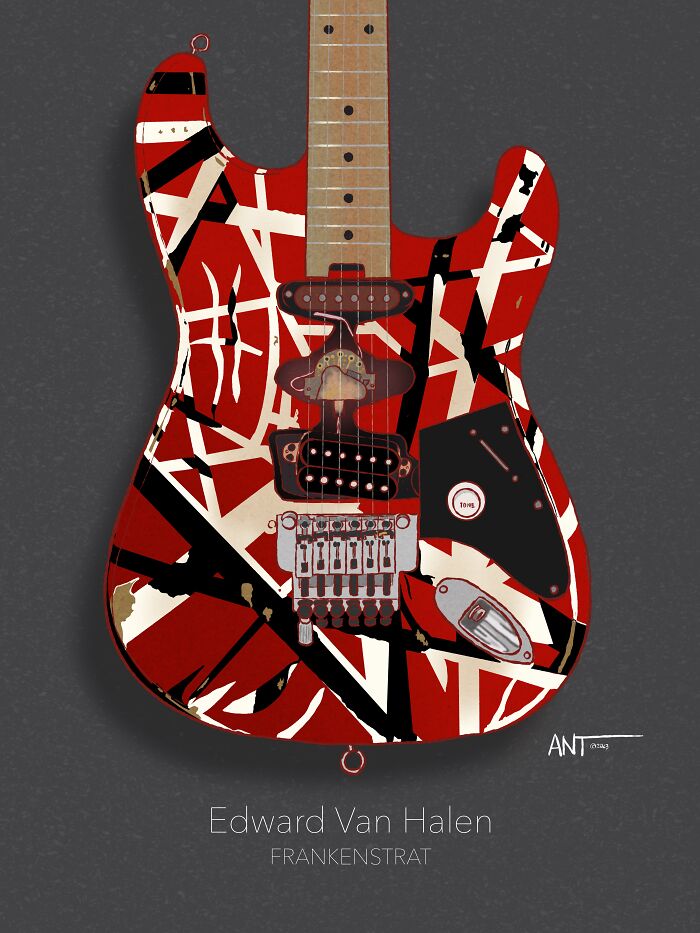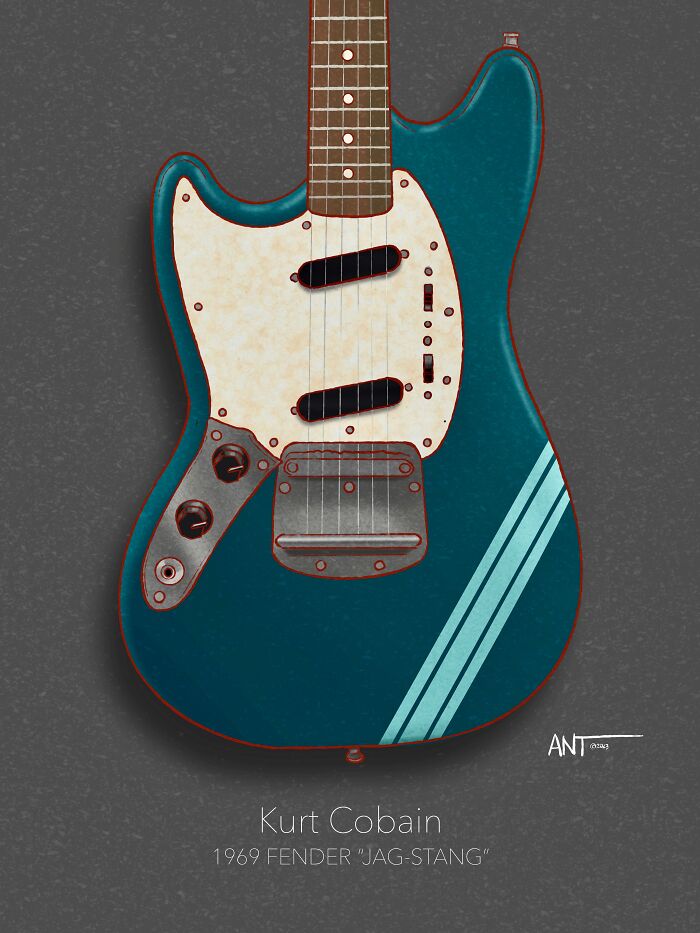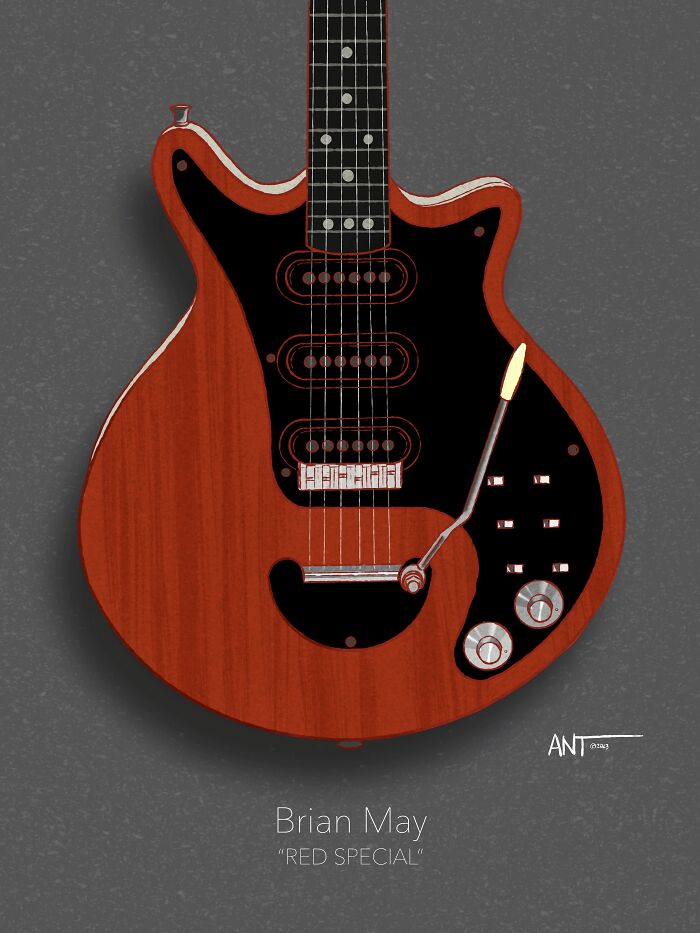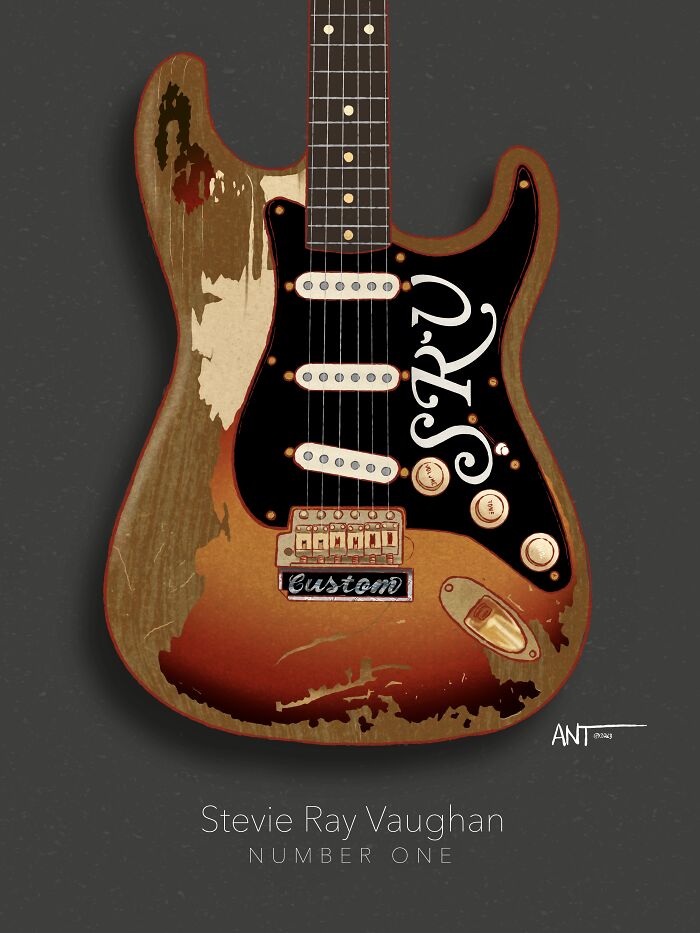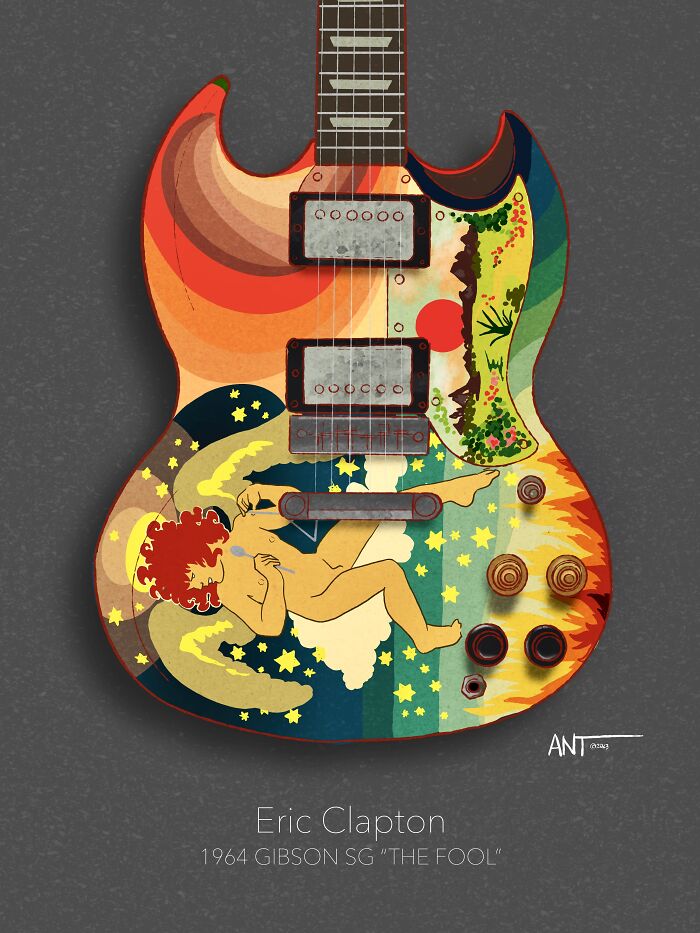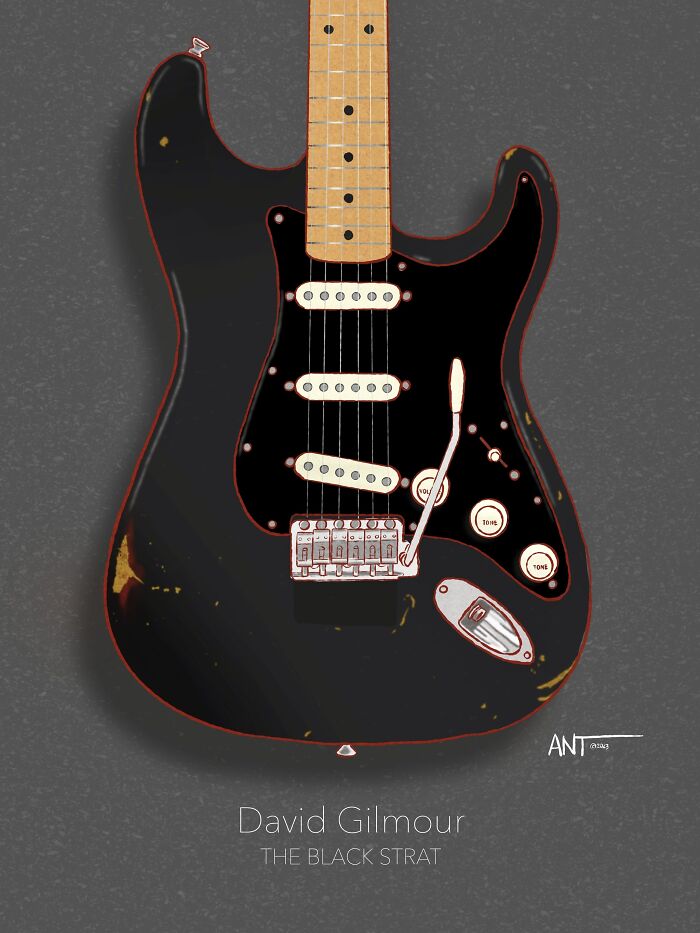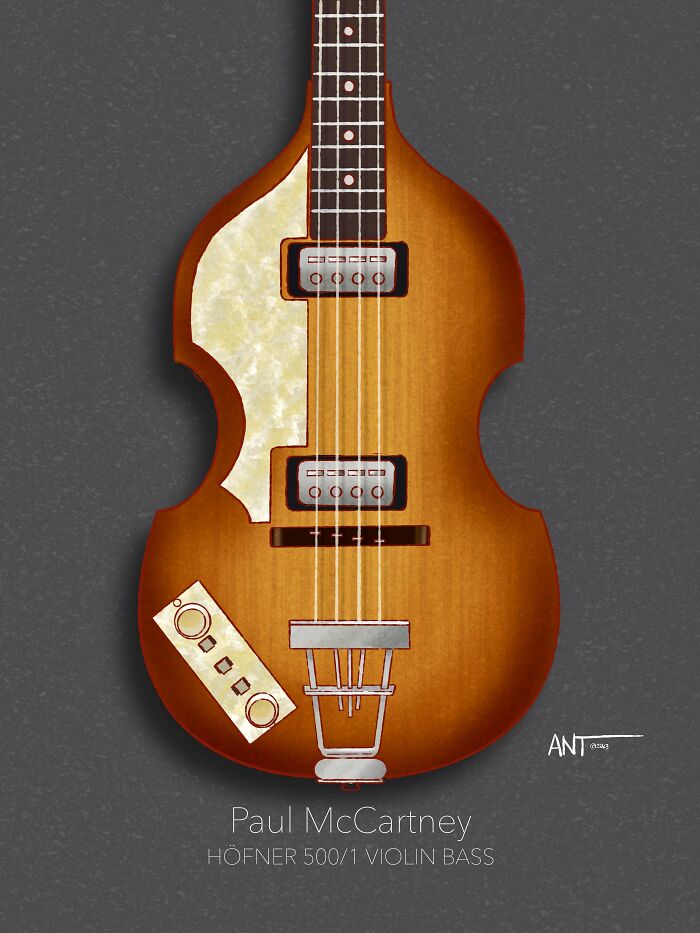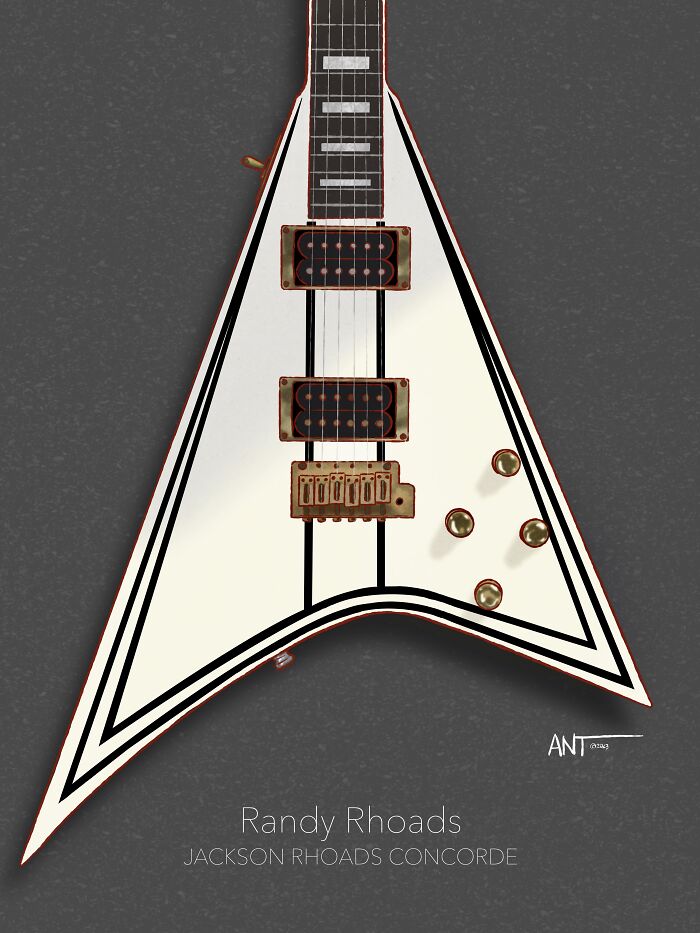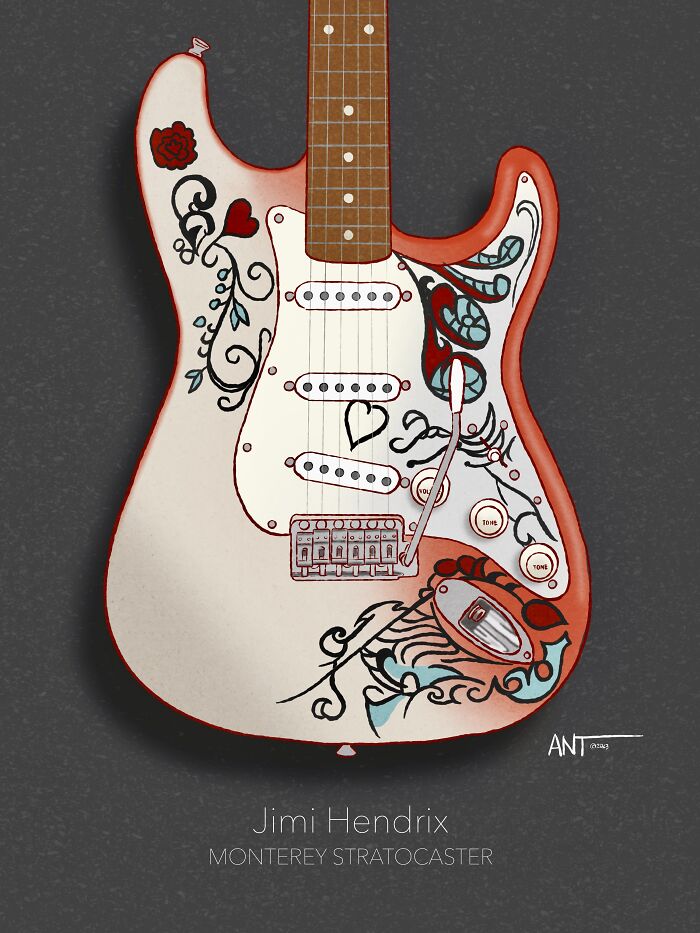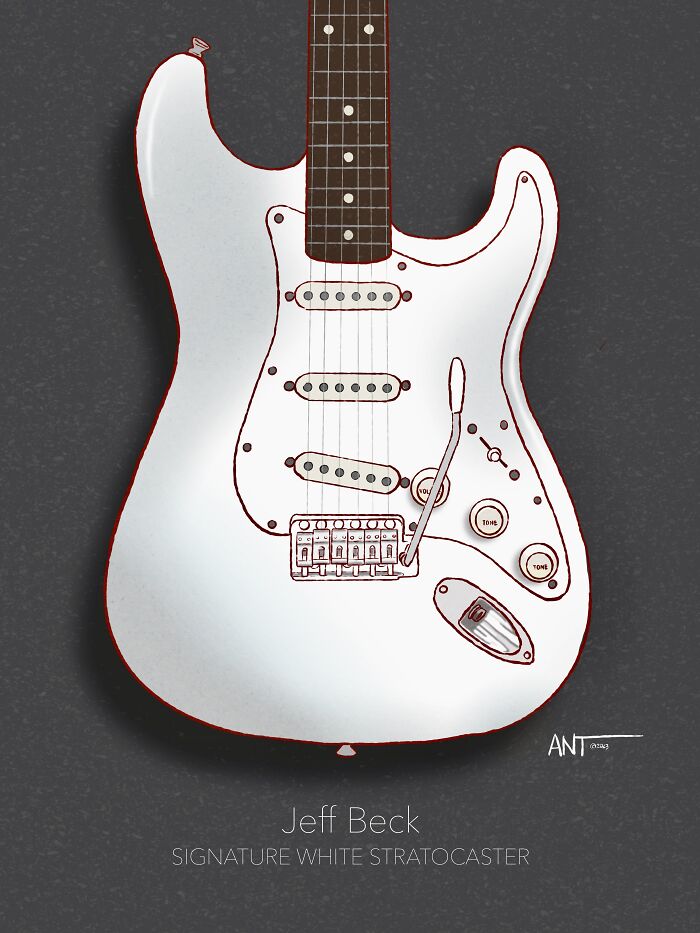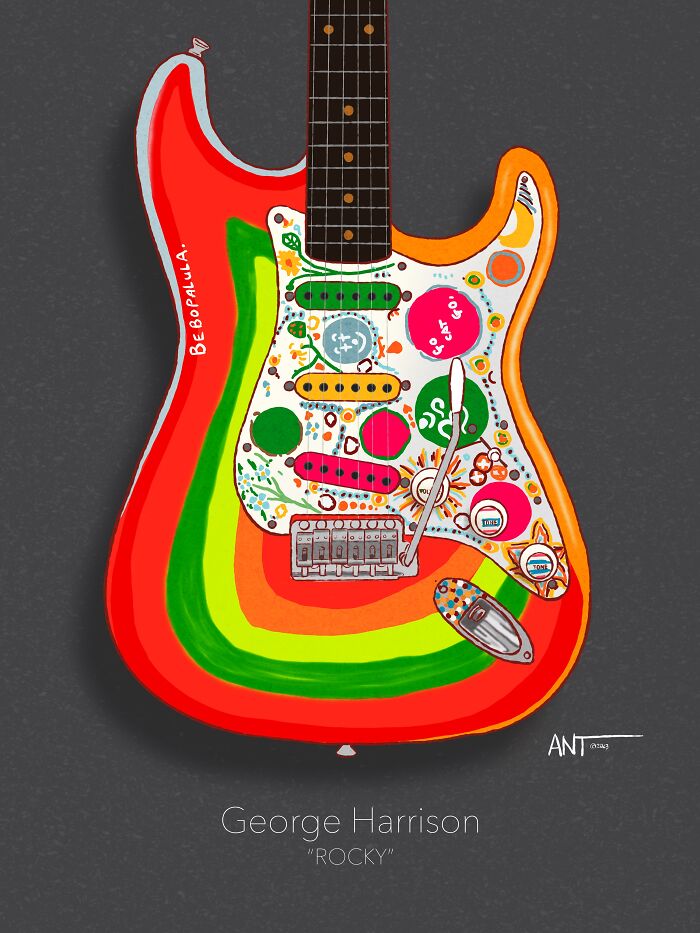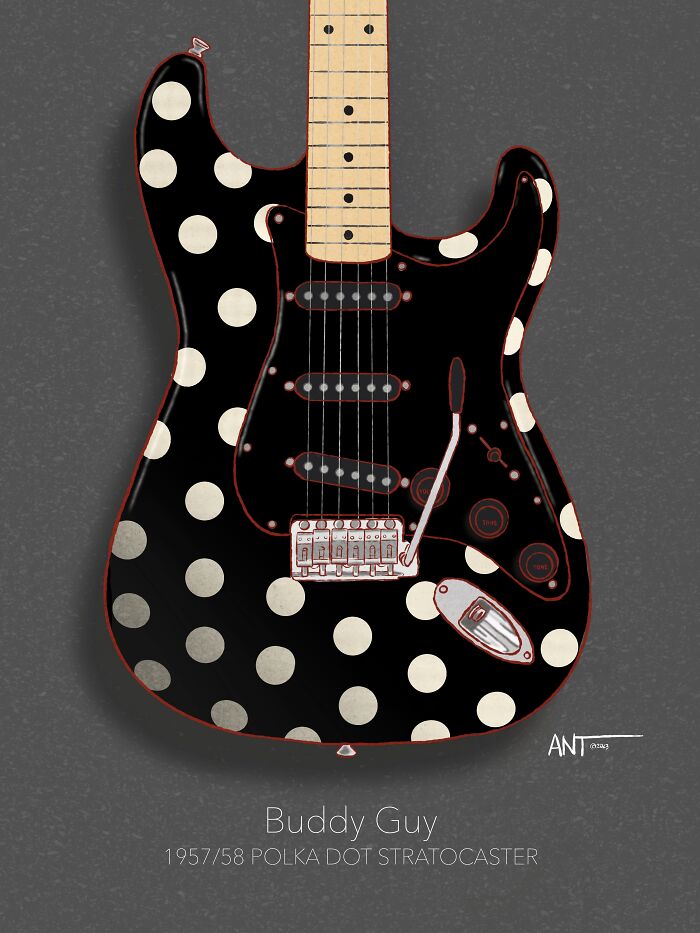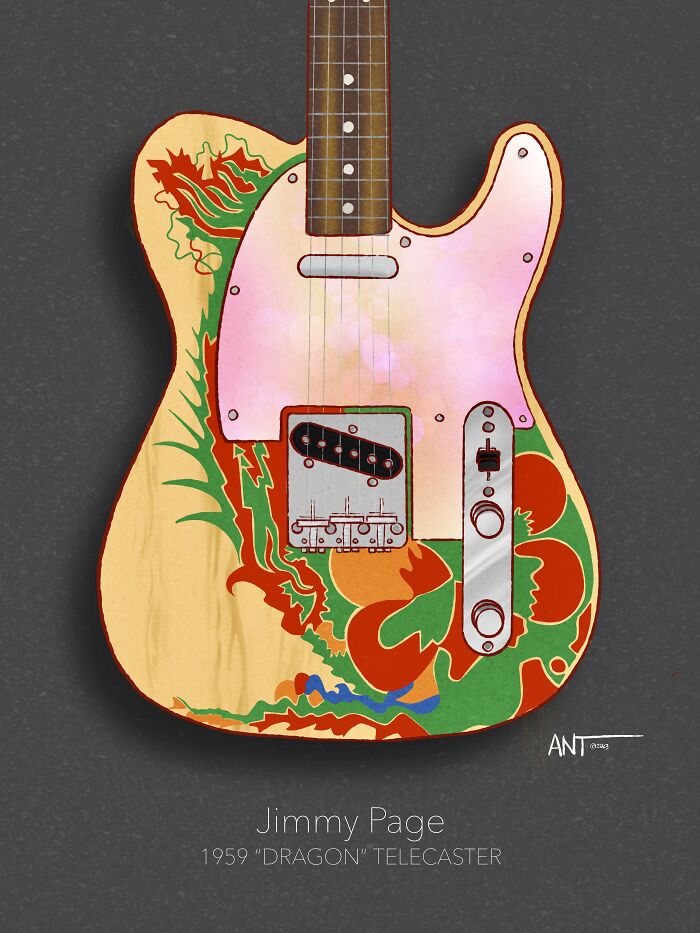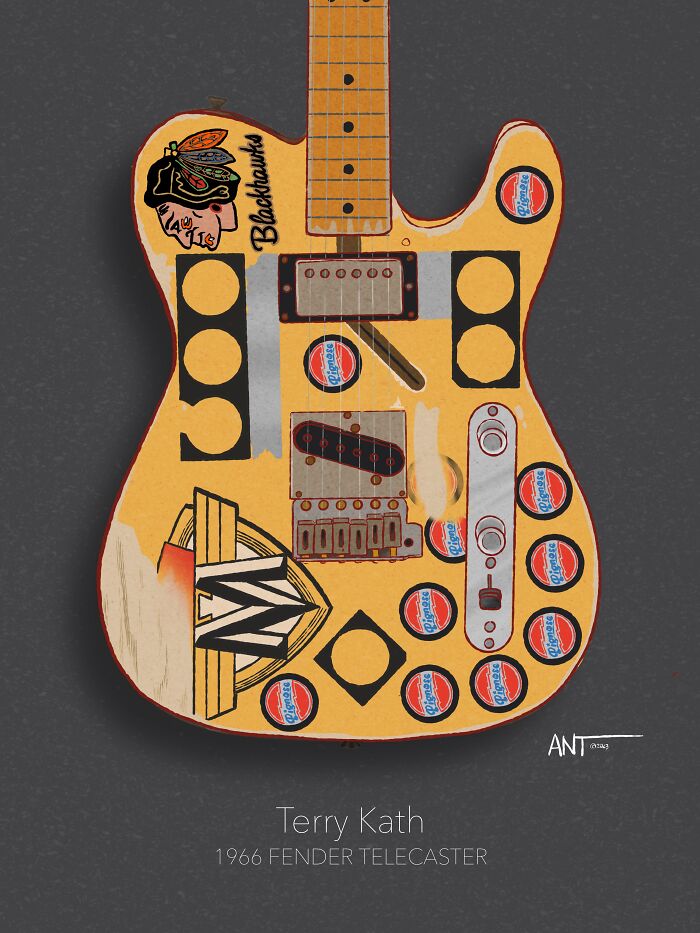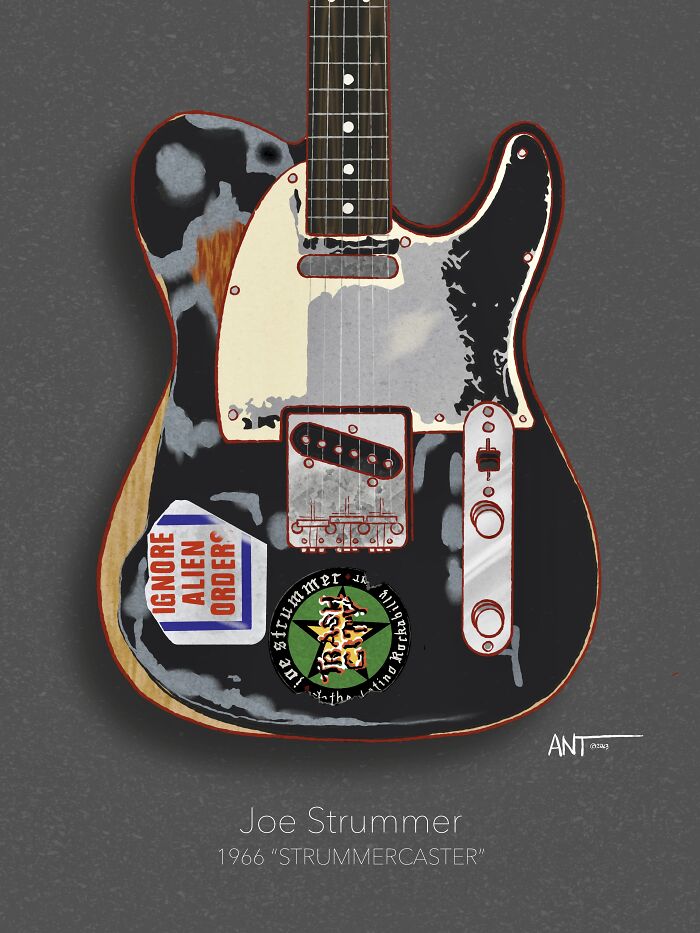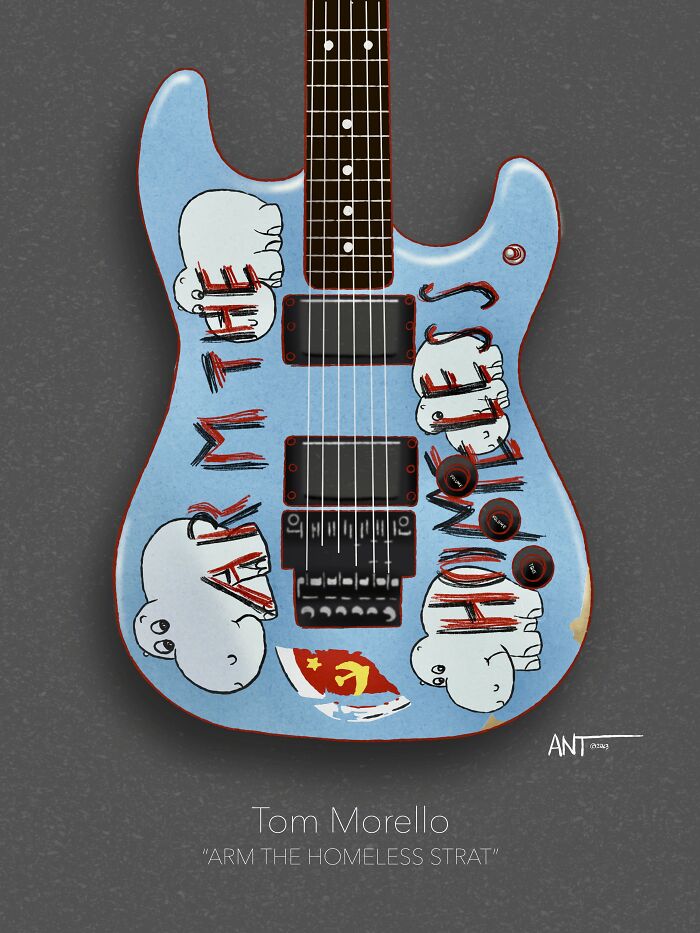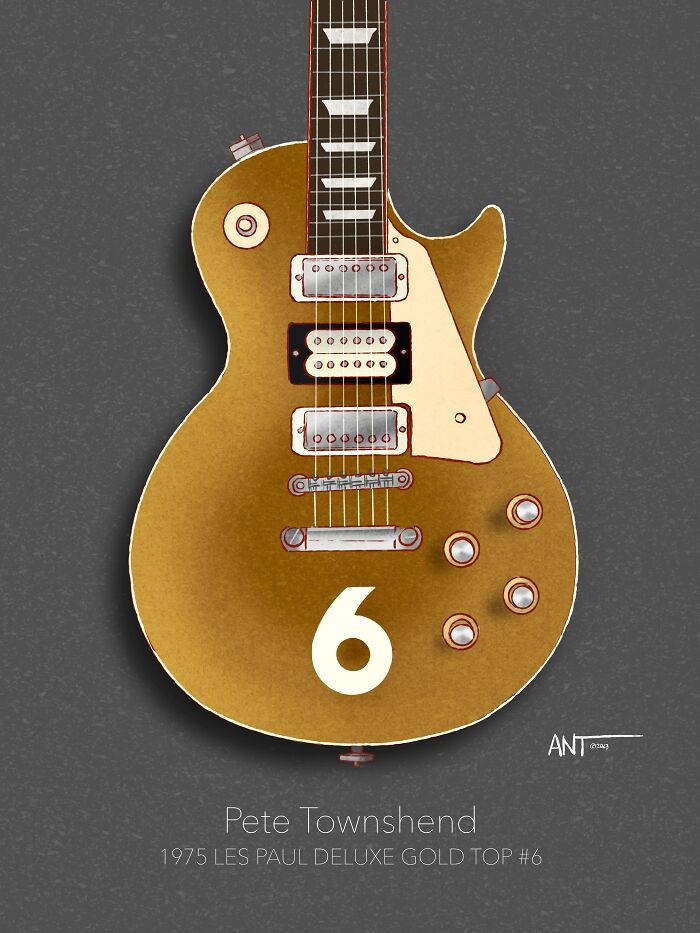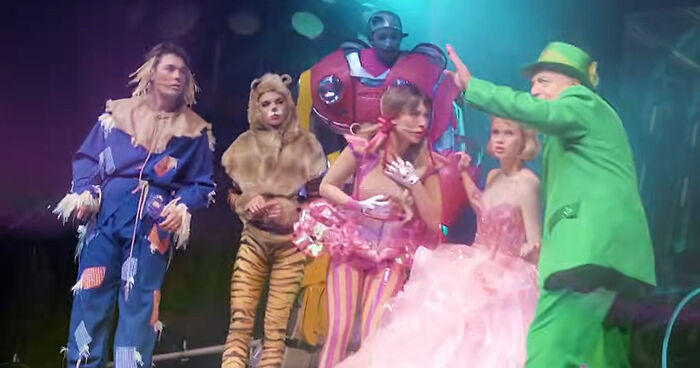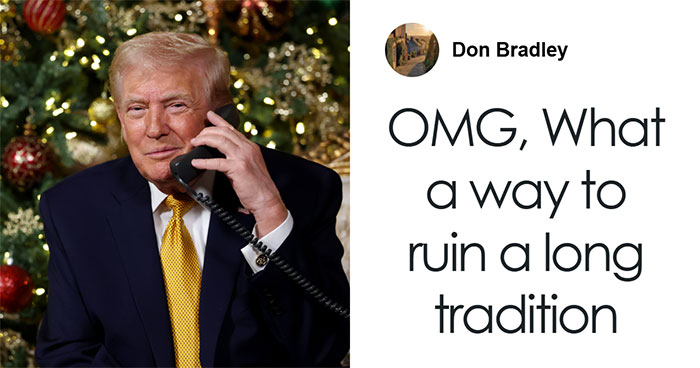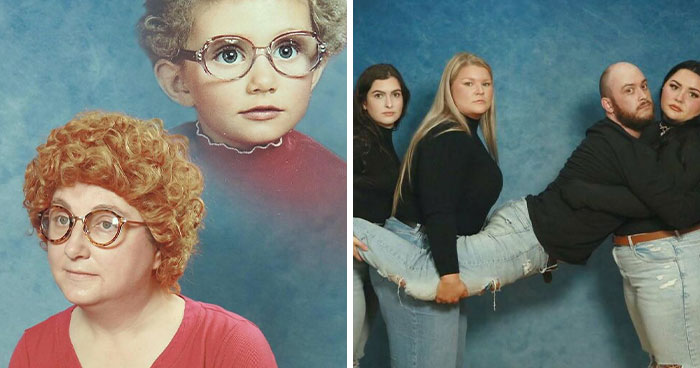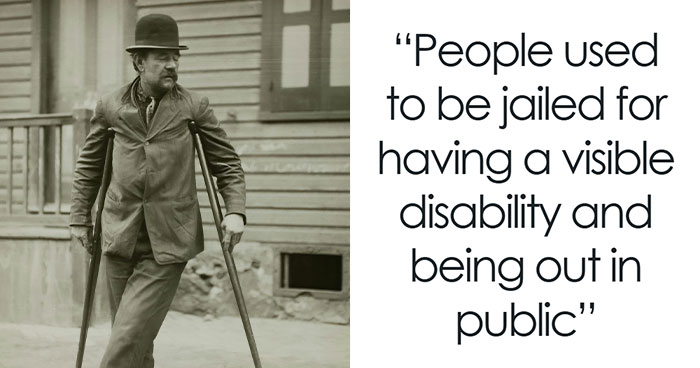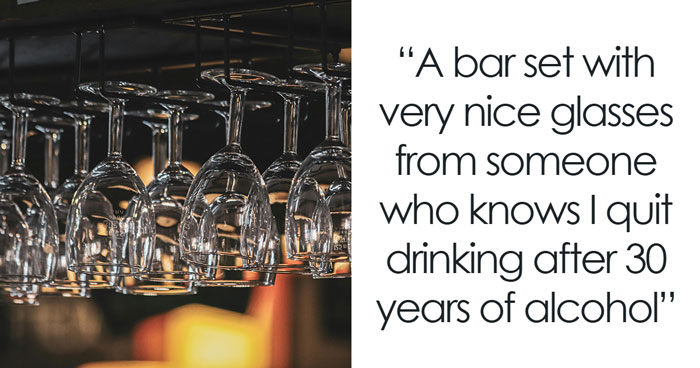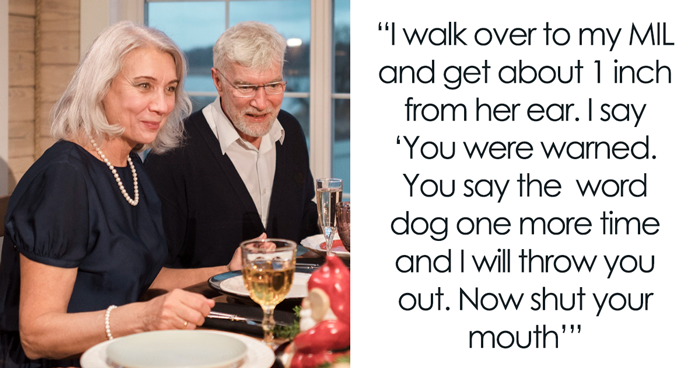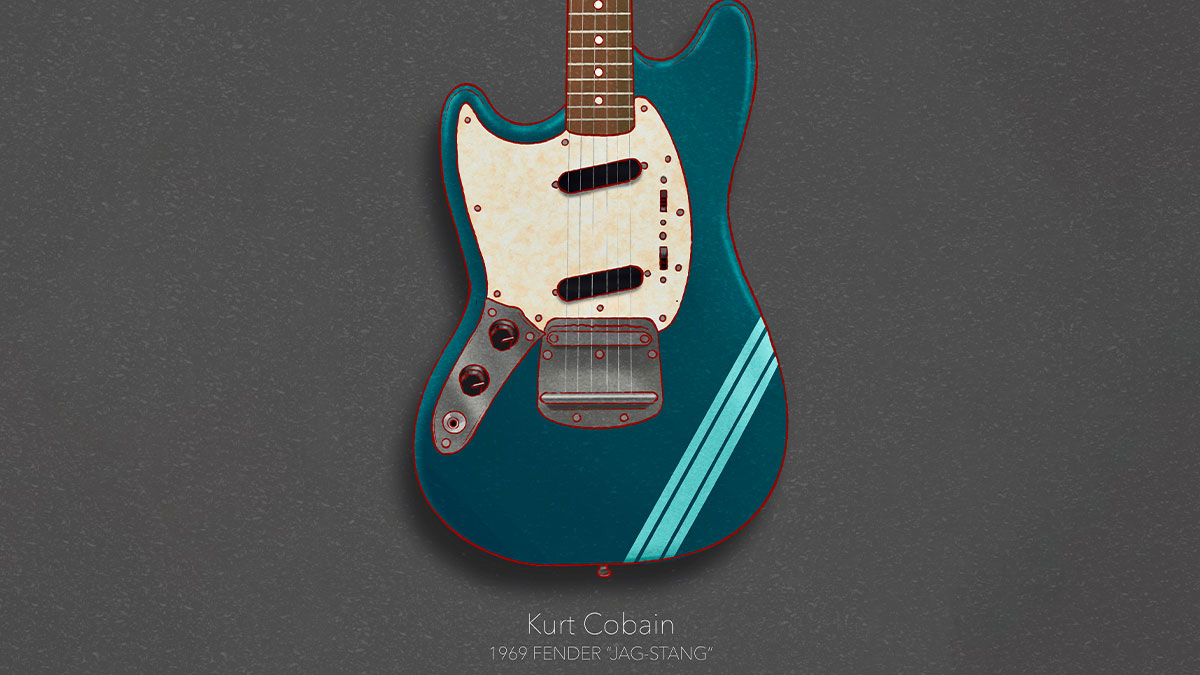
“GuitARTist”: 17 Iconic Guitars Of Hendrix, Clapton, And More
This is my initial art series of some of the most famous guitars ever played by some of the most famous guitarists who ever lived. These illustrations were hand-drawn using Procreate and an Apple Pencil on my iPad. Each one took about 2 hours to complete.
As for me... during the day, I'm an executive creative director in the world of marketing, and at night, I draw for fun. I am a graduate of The School of Visual Arts in NYC. Enjoy!
More info: Instagram | anthonygiaccone.com
This post may include affiliate links.
Eddie's Iconic "Frankenstrat"
Aptly nicknamed “Frankenstein,” this guitar was pieced together by Eddie Van Halen from modified factory seconds and mismatched odd-lot parts, then spray-painted. It represents an effort to combine some of the most desirable elements of Gibson and Fender guitars into a single instrument that was not commercially available at the time. Van Halen was continually striving to achieve the ultimate guitar for tone, playability, dependability, and functionality. The unique guitar embodies not only his groundbreaking and unorthodox playing style but also his ingenuity in design and engineering. One of the most recognizable guitars of all time, it spawned legions of copies from other manufacturers and inspired generations of fans to design their own instruments.
I am a graduate of the School of Visual Arts in NYC. When I was a little kid, I dreamt of being an animator for Walt Disney—little did I know that my life would take a different turn. Today, I find myself an executive-level creative director in the advertising and marketing world. But I LOVE music—and drawing for relaxation! In my spare time, I enjoy drawing (using Procreate on an iPad) musicians, movie stars, professional athletes, and anything else that seems fun to draw. I am new to Bored Panda and would love to share more of my work in the future. You can view my work on Instagram!
Kurt's "Jag-Stang" Fender
Although Kurt was seen playing a variety of Fender guitars over the years, his Fender Jaguar® and Mustang® remain the most iconic due to their use on the "Nevermind" tour and "Smells Like Teen Spirit" music video. Kurt designed the Jag-Stang® to combine his favorite elements of both instruments and brought it to life with help from the Fender Custom Shop in 1993.
Brian May's "Red Special"
Brian May and his father Harold started to hand-build an electric guitar in 1963 – a project that would take over a year to complete. Brian dreamed of a guitar that would outperform any of the existing commercially-made electric guitars; his father had the technical knowledge and skills to help make the dream come true. The book describes in detail the creative lengths father and son went to in order to construct the guitar. They were incredibly resourceful, using any materials they could get their hands on; the neck of the guitar was constructed from wood from an 18th-century fireplace mantel that a friend of the family was about to throw away and each of the position inlays was hand shaped from a mother-of-pearl button. Previously unseen original sketches, diagrams and notes accompany the text. For the last 50 years The Red Special has been the guitar that Brian played on every Queen album, in all of Queen’s live shows around the world and on the most special of occasions.
As an art school graduate, I tend to look at the world around me in a very aesthetic way—baseball uniforms, movie posters, Formula One car designs, fast-food logos, and almost anything else that can be viewed through an artistic lens. Was there a spark for this series of drawings? Yes. It all started when I was a teenager, and Eddie Van Halen painted his hybrid white Stratocaster with black stripes—one of the coolest-looking guitars in rock and roll history.
Stevie Ray's "Number One" Strat
Eric Clapton's "The Fool" Gibson
Designed by Dutch co-operative The Fool. Guitar was also owned at various times by Geo. Harrison, Jackie Lomax and Todd Rundgren.
Once I started with Eddie’s Frankenstrat, it led me down a rabbit hole to discover what other notable guitarists had been associated with “signature” guitars. I think the hand-painted guitars of George Harrison, Eric Clapton, Jimmy Page, and Eddie Van Halen are probably my favorites, as they are a part of rock and roll history. I really tried to depict the guitars as they appear today—weathered, chipped, and broken in. Choosing which guitars to draw came down to two things: “Is it cool?” and whether or not I like their music.
David Gilmour's' "Black" Strat
‘The Black Strat’ was integral to the recording of Pink Floyd’s seminal masterpiece The Dark Side Of The Moon (1973), as well as follow-up albums Wish You Were Here (1975), Animals (1977) and The Wall (1979), LPs which form the four cornerstones of the classic-era Pink Floyd.
Paul's "Violin" Höfner Bass
Paul McCartney has played his Höfner violin bass since 1961 when he purchased it whilst playing, with The Beatles, at the Top Ten Club in Hamburg, Germany. He is still playing a violin bass, a 1963 model that he has owned from new, and used on more recordings and played at more gigs than can be counted.
I listen to music by these guitarists while drawing their guitars! It just makes the creative process more enjoyable when you can delve deep into the music while drawing the instrument that was essential to it. I would say that the happier you are while listening to the music, the quicker and more enjoyable the time and process become. Not to mention, it gave me a greater appreciation for the musicians and the body of work they have created.
Randy's "Concorde" Jackson
Jimi's "Monterey" Strat
Jimi Hendrix took the world by storm with his incredible Monterey Pop Festival performance, which he concluded with the sacrificial burning of his now-iconic hand-painted Stratocaster. Destroyed during the fiery culmination of his set, this one-of-a-kind guitar survived only in photos and film.
Jeff Beck's "Signature" Strat
From blistering British Invasion beginnings through a long and acclaimed solo career of remarkable stylistic versatility, Jeff Beck has taken the Stratocaster to unbelievable sonic heights, with one of the most distinctive musical voices ever coaxed from the instrument. With classic style and special features, make his sound and style your own with the Jeff Beck Stratocaster, which ranks among Fender's most popular and longstanding artist instruments.
George's "Rocky" Strat
Sometime between the 1967 Sgt. Pepper’s Lonely Hearts Club Band sessions and the June 25 live global telecast of “All You Need is Love,” Harrison’s beloved Stratocaster morphed into what the world now knows as “Rocky.” In a fit of inspiration, he grabbed a brush and some Day-Glo paint to give the instrument a multicolored psychedelic makeover. Instead of the iconic Sonic Blue finish, its top and headstock were now adorned with bright red, green, yellow and orange accents, making it truly stand out on stage. Harrison even painted “Bebopalula” on the upper body, “Go Cat Go” on the pickguard and Rocky on the headstock in December of 1969.
Buddy Guy's "Polka Dot" Strat
“The polka dots are because that’s the style of my mother, Isabell Guy,” Buddy told a writer in an unpublished excerpt for an interview in 2015. “There’s a long story behind that,” he says. “I promised her that I was going to buy her a polka dot Cadillac to make her feel better, because she had had a stroke and she never saw me play, so I always felt I was lying to her about being a musician! I was going to get famous and drive back to Louisiana in a polka dot Cadillac to show her I’d made it.”
Jimmy Page's "Dragon" Tele
While this guitar is instantly recognizable as used by Page back in Yardbirds days, his #1 Les Paul standard (1959, sunburst) was used on many Zep Lps and played live at countless gigs. Jimmy bought this guitar from Joe Walsh in James Gang days.
Terry Kath's Customized "1966 Tele"
Terry Kath's main guitar - the one with which he is most identified, and which accompanied him on the journey to cult status - is a most unusual 1966 Telecaster, completely customized and plastered with stickers. Kath was so attached to the guitar that he'd buy a seat just for the instrument when traveling by air, rather than entrusting it to airline baggage handlers or even Chicago's road crew. The Tele® was an amalgamation of highly personalized modifications, including a sawed-off Tele bridge with a synchronized Strat® tremolo, a humbucking neck pickup, custom body routes, a reverse control plate, custom tuning machines and three "wing" string trees. Adorned with Pignose stickers and other intricately placed regalia, the guitar has become legendary in of itself and is synonymous with Kath and his enduring musical legacy.
Joe's "Strummercaster"
Tom's "Arm The Homeless" Strat
Pete's "#6" Les Paul
Pete Townshend is known for his aggressive showmanship, which includes his “windmill” strumming technique and destruction of his instruments. This guitar was one of nine numbered guitars used on tour with the Who in 1975, each set to specific tunings and capo settings for various songs. This organization, along with a customized strap-lock system, was developed by Townshend’s guitar tech Alan Rogan. The headstock for this instrument snapped off after a December 23, 1975, show at London’s Hammersmith Odeon as the guitar came flying out of a second-story window, breaking into two pieces when it hit the ground. In 2002, the body and headstock were reunited and restored by luthier Cristian Mirabella.
Missing; Rory Gallagher's beat-to-shitt- Strat/ Adrian Belew's 1953 beat-to-shitt-Strat/Leslie West's Les Paul Jr. that Felix gave him. I think he played it at Woodstock/Francis Rossi's (Status Quo) green Tele.
Im so glad to see Rhoads and SRV on this list, among others. I skimmed through the other comments but I haven't seen Yngwie Malmsteen's scalloped strat (the Duck) or Uli Roth's Sky guitar mentioned yet, guitars as iconic as their players.
Missing; Rory Gallagher's beat-to-shitt- Strat/ Adrian Belew's 1953 beat-to-shitt-Strat/Leslie West's Les Paul Jr. that Felix gave him. I think he played it at Woodstock/Francis Rossi's (Status Quo) green Tele.
Im so glad to see Rhoads and SRV on this list, among others. I skimmed through the other comments but I haven't seen Yngwie Malmsteen's scalloped strat (the Duck) or Uli Roth's Sky guitar mentioned yet, guitars as iconic as their players.

 Dark Mode
Dark Mode 

 No fees, cancel anytime
No fees, cancel anytime 






